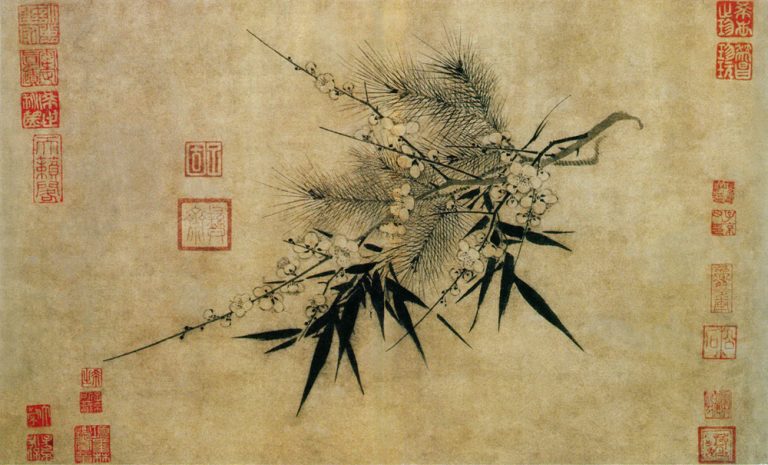Juan Percowicz claims to teach philosophy rather than spirituality or religion, with Gurdjieff as presented by Ouspensky and Dale Carnegie as important but not exclusive references.
by Massimo Introvigne
Article 3 of 5. Read article 1 and article 2.


What did the students learn in the classes? The BAYS does not regard itself as a religious movement, and students keep their own religion if they have one. I interviewed one who told me that she regularly goes to Catholic Mass, and another spent a good part of her life as an executive in different leading Argentinian Jewish organizations. Rather than “religion” or “spirituality,” they prefer to use the word “philosophy.” However, they insist that we are all and naturally philosophers, that we use this word or not. We can, however, repress and deny our philosophical attitude, i.e., the natural tendency of asking questions about the meaning of life, but this generates stress, frustration, violence at the individual and social level. It is even the root cause of the alarming spread of drug addictions, and of wars. Some of my interviewees were doctors and clinical psychologists and insisted that the study of philosophy may help solving serious problems of addiction, besides improving the general well-being.
Just as it happened with Gurdjieff, the focus was much more on this life than on the next. Percowicz told me he personally inclines towards the doctrine of reincarnation and finds the idea of karma reasonable, but nobody is obliged to be religious or to believe in any religious doctrine in the school, although there are groups studying—but from a “philosophical” more than from a dogmatic or theological point of view—the sacred scriptures of different religions.
The problem with Gurdjieff is that he was never easy to understand. Despite biographies, conferences, special issues of academic journals, and courses devoted to him in several universities, Gurdjieff’s thought remains elusive to the non-initiated. In the court cases against BAYS, the lack of familiarity by prosecutors with Gurdjieff’s idiosyncratic language and teaching style explains why the school’s jargon was often misunderstood. Gurdjieff was a harsh spiritual master, who believed that most humans were in a sleeping state without knowing it and needed a shock therapy, including verbal abuse and demanding physical exercises, to wake up.
Percowicz told me that these were methods perhaps appropriate for a different historical time. He never adopted them but from Gurdjieff, as presented by Ouspensky, he took two fundamental ideas. The first is that one of the most difficult human enterprises is to observe ourselves. The first stages of Gurdjieff’s “Work” propose observation, verification and acceptance of the truth of the human condition through study, participation in group work, and mindfulness exercises (“self-remembrance”). Theoretically, each of us should be able to perform this self-observing routine individually. In practice, however, since the risk of self-delusion is always present, a group work with others is indispensable for evolution. By working in group, self-observation can be more objective; and an experienced master may make the path to evolution considerably shorter.


Gurdjieff also taught that many contradictory, competing “I”s or selves coexist in each person. This conflict makes thinking and acting in a unified form ultimately impossible. A contradictory set of thoughts, emotional reactions, and repetitive mechanisms of self-protection determines a state of confusion and unhappiness. An awareness of this state is the first step in the direction of awakening. As Australian scholar Carole Cusack has demonstrated, Gurdjieff (who disliked putting his ideas in writing) did teach a model of evolution where humans were divided into types, although the number of them varied over time and each of his main disciples adopted a slightly different model. Percowicz used a seven-type model, and within each degree introduced the distinction between aspirant, formal, and informal. While in the first three levels humans are dominated by one feature only—physical, emotional, or intellectual—some balance is achieved at level 4, which allows to move to the higher levels of evolution 5 (the genius), 6 (the saint), and 7 (the master or the angel). Theories of types are, of course, not exclusive to Gurdjieff. Students found similar ideas in Hermann Hesse’s novel “Steppenwolf,” which became an important reference for the school. One senior student observed that the ten stages mentioned by Nichiren Buddhism as presented by the Japanese Buddhist movement Soka Gakkai convey the same principles, although Percowicz told me he had never read Nichiren or Soka Gakkai literature. He might have found similar ideas in Tibetan Buddhism, Sufism, and several other traditions.
Some Gurdjieffian harshness remains in sentences that may give the impression that those at the lower levels, dominate by the “low ‘I’s” (yoes bajos) are hardly human. But in fact the school is there to accompany them in their evolution, and achieving the highest levels is presented as difficult but not impossible. According to the list I examined, twenty students had achieved the seventh level, nine of whom were “7 formal,” including Percowicz. He presents himself as one “who knows what he knows and knows what he does not know,” which in itself is no mean achievement. Some early students took it to mean that, by knowing both what he knows and what he does not know, Percowicz in fact knows everything. He took this interpretation as a joke, clarifying that “knows what he does not know” means that he is aware of what he has yet to learn. At any rate, all students I interviewed were very grateful to him and claimed to have benefited from his suggestions and insights even in fields he is not directly familiar with.


In fact, Percowicz teaches a method more than contents. Ouspensky offers a point of view from which a great number of authors and texts can be mobilized at the service of spiritual evolution, often through short aphorisms that are then commented in all their philosophical implications. The texts and authors the school studies the most changed and rotated over time. Benjamin Franklin, Thomas Jefferson, William Shakespeare were all discussed at one time, and I encountered several references to Argentinian poet Pedro Bonifacio Palacios, “Almafuerte.” Dostoyevsky had a special importance, and the image of a poker game where the cards corresponded to aphorism-like sentences of the Russian writer inspired a book published in 1993 and an opera the school’s musicians wrote and represented in 1995. During the COVID lockdown, which was very strict in Argentina, students deemed it fit to meditate on “Les Misérables” by Victor Hugo. The BAYS also created subgroups exploring a great variety of subjects. One was astrology, approached psychologically according to the school of Oskar Adler.


Yet, the school discovered that, while philosophy made it easier to become better human beings and even overcome alcohol or drug addictions, problems remained. These problems were connected to the fact that we constantly need to communicate with others, who may be very different from us, and we do not really know them. Communication was always a major theme of BAYS, and was originally approached through the notion of “the way of the geisha” (geishado), which came from a poem by Percowicz’ old yoga master, Dante Parandelli. Scholars of Japanese culture know that a geisha is not a prostitute. Although she may sometimes enter into sexual relationships with her clients, she mostly entertains them with her artistic, musical, and conversational skills and a superior art of courtesy. “Geishado” meant in the BAYS acquiring a style of refined courtesy, and was applied to both women and men. When the school was accused of favoring prostitution, “geisha” as synonym of an aristocratic courtesy typical of Japanese culture was increasingly replaced by “samurai,” which Hollywood had popularized in the meantime.
Since 2010, however, the main reference for communication became Dale Carnegie’s 1936 book “How to Win Friends and Influence People,” one of the greatest bestsellers of all times. Carnegie’s book created a whole generation, in fact more than one, of American businesspersons and politicians who believed that we can change others by changing our own attitude to them. Carnegie is generally considered as a quintessential torch-bearer of American values of moralistic benevolence. It is not the lesser paradox of the BAYS case that its ubiquitous presence in the school was interpreted as yet another way of teaching the sinister arts of brainwashing and manipulation.


Carnegie would have in fact agreed with Percowicz’ very simple ethic, which is based on the principles of not harming themselves and not harming others. I was told by some of the earliest students that, at a time where life was difficult for homosexuals in Argentina, they were surprised when, having disclosed their sexual orientations, they were told that BAYS regarded them as irrelevant. BAYS also welcomed artists and musicians whose way of living was somewhat unconventional. If a student wanted to display in her apartment a collection of sex toys—the famous “museum of sex” I mentioned before—, or others wanted to photograph themselves in the nude, nobody would prevent them from doing so.
The police believed they had found a smoking gun proving illegal activities and abuse when they encountered in the apartment of a middle-aged student (not located in the State of Israel Avenue building) an old picture of several naked men and women making love in the same room, and identified two of them as BAYS members. The photograph was several decades old, and whether it was related to the school and what it proved exactly was unclear.
In fact, what is more surprising is how infrequent references to sexuality were in the BAYS lessons. The police diligently listened to several thousand hours of courses, and came out with a meager handful of references to the sexual sphere, one noting that sexual tales many would regard today as objectionable abound in the Old Testament (Biblical scholars would agree), and another (from 1989) arguing that all sorts of experiences may lead to increase one’s knowledge of others, including—under certain conditions—prostitution. This sentence mentioned in the 2022 indictment struck students as strange. They found the relevant class, and discovered that what followed, and had not been quoted by the judge, was that of course any unwanted erotic experience is negative. The lesson says, literally, “But there is something with eroticism that is very important for you to bear in mind: you should never do it if the desire and the need is not in your blood, because then it is a sin, it is poisoned when it is not a desired event.” And further on the lesson adds, “The unwanted erotic event is a suffering, it is assimilated to rape, so I think it is a horrifying moment that a human being goes through. It is immoral, even within marriage it is immoral and so much so that, in American jurisprudence, if one of the two spouses does not want it, it is punishable as rape.”
Sexuality was never a main theme, and in fact was hardly mentioned, in the BAYS lessons. It was left to the private sphere, governed by the principle that if we do not harm ourselves or others there is no such a thing as “sin” and we should not feel guilty.









